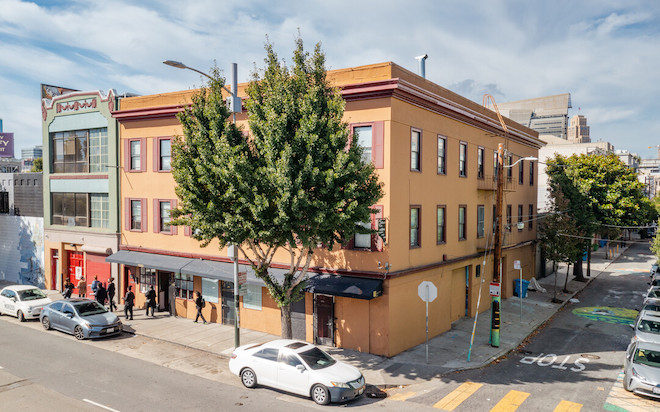I recently met someone who was in the middle of reading my book, Brave New Home, and had some questions to ask me about the book’s chapter on co-living. As I explained to the reader, the co-living scene seems to change year by year. The co-living scene that I wrote about in the book, full of big co-living operations — WeLive, Common, Ollie, Starcity and more — imploded during the pandemic. Many of their properties have been sold off and turned into hotels or apartments.
But I still hear a ton about new co-living ideas. The appeal of affordable, shared housing and / or intentional communities persists. Maybe co-living is not dead (as I may have written once!), but different.
Here are 4 ways co-living has changed:
-
Large-scale co-living operations are less focused on social connection than on affordability and practicality
For the previous generation of co-living operators, a key part of the co-living pitch was the intentional community provided. Curated amenity spaces, group dinners and classes were all aimed at people who wanted something more than just a room to rent. But now many of the most successful operators of shared housing are less focused on community, and more focused on helping people find the most affordable housing for their needs.
Padsplit, which continues to grow and now has more than 19,000 units under operation, is providing shared housing where people rent by the room. Padsplit’s appeal is a combination of affordability and easy-in/out renting, not necessarily the community the housing provides.
Likewise, Urbanests offers rooms for rent with few frills. It’s appealing to international engineers in San Francisco who are working for Gen AI startups and who can’t afford or don’t want to pay extra for a full apartment. Both companies point to how shared housing can be an important tool for addressing the affordability crisis.
Additionally, the organizations who are talking about co-living as a housing solution, such as Pew and 5Boro Institute, see it as an opportunity to efficiently reuse vacant office buildings. Co-living is well suited to office building floor plates because you can retain shared bathrooms and make use of windowless core space as shared amenity rooms. These approaches to co-living might mention the importance of community, but they’re more focused on the practical fit between co-living and office towers.
-
It’s more temporary
On the flip side of the trend toward efficiency are co-living experiments that seek out deeper community in shorter sprints. Edge Esmeralda is one of the more captivating examples of the trend where people are living in close knit communities, or what they call a “pop-up village,” for just a few weeks a year. To attend Edge Esmeralda, people will end up in nearby hotels and campsites with shared activities during the day.
Temporary co-living is also more in keeping with the growing trend of digital nomadism, where people change locations every few months. It’s interesting to see that co-living operators that cater to digital nomads, such as Outsite, have continued to stay in business while the traditional longer-term rental co-living companies have not. Perhaps there’s more of a market for short-term intentional communities than for long-term commitments to live with a group of people.

-
People want to live near their community, not necessarily under the same roof
As Edge Esmeralda demonstrates, a community that lives near each other might be more preferable than living directly with each other. On my recent trip to San Francisco, we stopped at Radish, a compound that exemplifies this kind of co-living. Radish includes several separate homes with one common building that includes a shared kitchen and common space. This kind of arrangement may be more in keeping with what people actually want out of co-living, particularly as they’re raising kids and having families of their own.
Radish’s founder, Phil Levin, has become an evangelist for this kind of living with his company Live Near Friends. Live Near Friends aims to help friends buy property near each other. They curate properties for sale where residents can live near their social circle, then help buyers navigate some of the legal and financing details to make their dream compound happen. New legislation, such as SB684 in California, has also made it easier to subdivide lots, potentially making these kinds of small co-living communities more attainable.
-
It’s more niche
Co-living was once about meeting strangers and finding common ground. Now many co-living communities are about connecting more deeply with people in your niche. Here in Philadelphia, we have a home-sharing program called Second Story, which connects students and seniors for shared living. Another start-up in the Philadelphia region, My Inspirement, is aiming to help “communities of choice” design a shared lifestyle with family and friends.
Beyond these examples, you can find a co-living community for surfing or wellness or a host of other niche interests. These smaller co-living operations, which can often be one-offs rather than chains, ensure residents have at least some shared interests or values as a foundation for living together.
As the housing crunch continues and as new models emerge, maybe co-living will see a resurgence in the second half of this decade?
Diana Lind is a writer and urban policy specialist. This article was also published as part of her Substack newsletter, The New Urban Order. Sign up for the newsletter here.
![]() MORE FROM THE NEW URBAN ORDER
MORE FROM THE NEW URBAN ORDER



